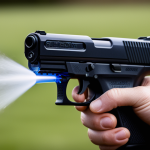Key Ingredients for Designing a Successful Training Regimen for UK Triathletes
Understanding the Basics of Triathlon Training
When it comes to training for a triathlon, whether it’s a sprint, Olympic distance, or even an Ironman, the complexity of managing three distinct disciplines can be daunting. However, with a well-structured training plan, UK triathletes can set themselves up for success.
Health and Fitness Foundations
Before diving into any training plan, it’s crucial to ensure you’re in good health and injury-free. For a sprint triathlon, for example, you should be able to swim 100 yards non-stop, cycle for 20 minutes continuously, and run for 10 minutes without excessive stress[1].
Have you seen this : Enhancing Off-Season Training: Cutting-Edge Techniques for British Sports Teams
Structuring Your Training
A successful triathlon training plan is divided into phases, each with specific goals. Here’s a general outline:
- Base Phase: Focus on building endurance and general fitness.
- Build Phase: Increase intensity and focus on race-specific fitness, including long efforts at target race pace and bike-to-run brick sessions[2].
- Peak Phase: Reduce workout durations, add rest days, and focus on shorter, race-specific workouts.
- Race Phase: Maintain fitness with short, low-intensity workouts and ensure full recovery before the race.
Creating a Balanced Training Plan
Weekly Training Structure
A typical week in a triathlon training plan includes a mix of swim, bike, and run workouts, along with rest days and strength training sessions.
Also read : Ultimate Training Techniques to Elevate UK Field Hockey Performance
For beginners, a plan might look like this:
| Day | Workout |
|---|---|
| Monday | Rest |
| Tuesday | Swim 16×25 (30” rest) in Zone 1 |
| Wednesday | Run 5x(2’ walk/3’ run in Zone 1) on flat terrain |
| Thursday | Bike 30’ flat terrain in Zone 1 at 80–90 RPM |
| Friday | Rest |
| Saturday | Swim 10×50 (45” rest) in Zone 1 |
| Sunday | Run 6x(1.5’ walk/3.5’ run in Zone 1) on flat terrain |
As the weeks progress, the intensity and volume of workouts increase, with a focus on balanced training across all disciplines[1].
Incorporating Strength Training
Strength training is often overlooked but is crucial for improving performance and preventing injuries. Dave Scott, a six-time Ironman World Champion, emphasizes the importance of strength and conditioning:
“If you look at data, one of the first things that’s lost as we age in our 30s is lean muscle mass. And if you lose muscle mass, you lose the ability to be mechanically efficient.”[3]
Here are some key strength training exercises to include:
- Activate your Transverse Abdominus: Essential for core stability.
- Single-leg Soaring Sequence: Improves balance and strength.
- Bent Over Row with Dumbbells: Strengthens the back and arms.
- Glute Exercise Sequence: Critical for running efficiency.
- Plank and Push-up Sequence: Enhances overall upper body strength.
Aim to do these strength training sessions at least twice a week, for 20-24 minutes per session[3].
Focusing on Specific Disciplines
Swimming
Swimming is often the most intimidating part of a triathlon for beginners. Here are some tips to improve your swim:
- Start Slow: Begin with short intervals and gradually increase the distance.
- Practice in Open Water: If possible, practice swimming in open water to get used to the conditions you’ll face on race day[2].
- Focus on Technique: Proper technique can significantly reduce fatigue. Consider working with a coach or using video-led workouts to improve your form.
Cycling
Cycling is a critical component of any triathlon. Here’s how to make the most of your bike workouts:
- Incorporate Brick Sessions: Bike-to-run brick sessions help you prepare for the transition from cycling to running, which can be challenging[2].
- Vary Your Terrain: Include flat, rolling, and hilly terrains to simulate race conditions.
- Pay Attention to Cadence: Maintain a consistent cadence (revolutions per minute) to optimize your performance.
Running
Running is the final leg of the triathlon and can be the most mentally challenging. Here are some tips:
- Gradual Progression: Increase your running distance and intensity gradually to avoid injury.
- Incorporate Brick Sessions: Running off the bike is different from a standalone run. Practice this transition to build endurance and mental toughness.
- Focus on Recovery: Running can be hard on your body, so make sure to include adequate rest and recovery days in your plan.
Managing Recovery and Rest
Importance of Rest Days
Rest days are not just about avoiding activity; they are crucial for recovery and performance improvement. Here’s why rest is essential:
- Physical Recovery: Allows your muscles to repair and rebuild.
- Mental Recovery: Gives you time to recharge and avoid burnout.
- Injury Prevention: Reduces the risk of overtraining and related injuries.
Active Recovery
Active recovery involves light, low-intensity activities that help in the recovery process without putting too much strain on the body. Examples include:
- Light yoga or stretching
- Easy swimming or cycling
- Short, gentle runs
Practical Insights and Actionable Advice
Using Rate of Perceived Exertion (RPE)
RPE is a useful tool to gauge your effort level during workouts. Here’s a breakdown of the RPE zones:
| Zone | Description |
|---|---|
| Zone 1 | Very light effort, easy breathing |
| Zone 2 | Light effort, comfortable breathing |
| Zone 3 | Moderate effort, slightly harder breathing |
| Zone 4 | Hard effort, labored breathing |
| Zone 5 | Very hard effort, deep and forceful breathing |
Using RPE helps you tailor your workouts to your current fitness level and ensures you’re pushing yourself appropriately[1].
Visualizing Success
Visualization is a powerful tool for mental preparation. Here’s what Dave Scott advises:
“Visualize your best training efforts on the race course. This will help you stay positive and calm, which is the ideal state in which to maximize your training sessions.”[1]
Example Training Plan: Sprint Triathlon
Here’s an example of what a week in a sprint triathlon training plan might look like:
Week 3
| Day | Workout |
|---|---|
| Monday | Rest |
| Tuesday | Swim 8×75 (40” rest) in Zone 2 |
| Wednesday | Run 20’ rolling terrain as 10’ Zone 1, 10’ Zone 2 |
| Thursday | Bike 55’ flat terrain as 20’ Zone 1, 35’ Zone 2 at 85–95 RPM |
| Friday | Rest |
| Saturday | Swim 4×100 (45” rest) in Zone 2, 6×50 (30” rest) faster in Zone 3 |
| Sunday | Run 30’ flat terrain in Zone 1 |
This plan gradually increases the intensity and volume of workouts while ensuring balanced training across all disciplines[1].
Designing a successful training regimen for a triathlon requires careful planning, balanced training, and adequate recovery. Here are the key takeaways:
- Start with a solid foundation: Ensure you meet the basic fitness requirements.
- Structure your training: Divide your training into phases with specific goals.
- Incorporate strength training: Focus on exercises that improve overall strength and efficiency.
- Manage recovery: Include rest days and active recovery sessions.
- Use RPE and visualization: Tailor your workouts and prepare mentally.
By following these guidelines and staying committed, UK triathletes can achieve their best-ever results in any triathlon event.
Table: Comparison of Training Phases
| Phase | Duration | Focus | Workouts |
|---|---|---|---|
| Base Phase | 4-6 weeks | Building endurance and general fitness | Gradual increase in swim, bike, and run distances |
| Build Phase | 8-9 weeks | Increasing intensity, race-specific fitness | Long efforts at target race pace, bike-to-run brick sessions |
| Peak Phase | 1-2 weeks | Reducing workout durations, focusing on race-specific workouts | Shorter, race-specific workouts, extra rest days |
| Race Phase | 1 week | Maintaining fitness, resting up for the race | Short, low-intensity workouts, full recovery |
Detailed Bullet Point List: Key Components of a Triathlon Training Plan
-
Health and Fitness Assessment:
-
Ensure you can swim 100 yards non-stop.
-
Be able to cycle for 20 minutes continuously.
-
Run for 10 minutes without excessive stress.
-
Structured Training Phases:
-
Base Phase: Build endurance and general fitness.
-
Build Phase: Increase intensity and focus on race-specific fitness.
-
Peak Phase: Reduce workout durations and focus on shorter, race-specific workouts.
-
Race Phase: Maintain fitness with short, low-intensity workouts.
-
Balanced Weekly Workouts:
-
Include swim, bike, and run workouts.
-
Alternate between high-intensity and low-intensity days.
-
Incorporate brick sessions (e.g., bike-to-run).
-
Strength Training:
-
Focus on exercises that improve core stability, leg strength, and overall efficiency.
-
Include strength training sessions at least twice a week.
-
Recovery and Rest:
-
Include rest days and active recovery sessions.
-
Use RPE to gauge effort levels and avoid overtraining.
-
Mental Preparation:
-
Visualize success on the race course.
-
Practice positive self-talk and mental focus during workouts.
By incorporating these key components, triathletes can ensure a well-rounded and effective training regimen that sets them up for success on race day.


